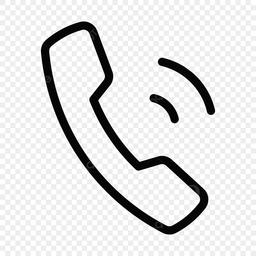Tips to use baling wire more efficiently
For recycling and waste management operations, baling wire costs can add up. We’ve put together 5 tips to help you optimize your baling wire usage and minimize costs:
- Choose the right type of wire
- Buy in bulk
- Utilize elongation properties
- Recycle used baling wire
- Invest in high-quality baling wire
Not only will these tips save you time and money, but they’ll also protect your employees and equipment.
1. Choose the right type of wire
Efficient usage begins with selecting the right wire. To choose the right baling wire, factor in your baler, the material you’re baling, and the bale storage conditions.
Baler machines
Determine which wire is best for your baler.Vertical balers typically require higher gauge wire thanhorizontal balers, which handle heavier waste materials and produce denser bales.
Some machines are designed for box wire, some for stem wire, and some for bale ties.
Manual balers use bale ties. Single loop bale ties have a loop at one end and need to be tied off by recycling personnel. If you’re dealing with material that produces consistently sized bales, you can save wire and time by using double loop bale ties. They have a loop at each end for easy clasping, but since the loops aren’t adjustable, they need to be properly sized to the bales.
Choose wire that is compatible with your baler to avoid wire breakage and equipment damage.
Material type
Thetype of material being baled also influences wire selection. Recyclable products, such as cardboard, plastic bottles, and aluminum cans, have unique properties that determine tensile strength and wire gauge requirements.
Expansive or heavier materials such as rubber tires require high-tensile wire or wire with enough elongation to withstand expansive pressure.
By calculating the weight and expansiveness of your bales, you can buy wire that satisfies tensile andload strengthrequirements without going overboard. Thinner gauges are less expensive and come with more wire per pound (as stem or box wire).
Storage conditions and transportation
You need baling wire that will properly function throughout the storage and transportation of the bale. If your bales are stored outdoors or in humid environments, galvanized wire will resist corrosion and maintain its integrity.
Hot-dip galvanization adds a protective zinc coating that shields the underlying steel from moisture and chemicals, keeping your bales secure during long-term storage. While galvanized wire is more of an investment, it saves time and money that would be spent on wires that fail due to rust or corrosion.
If you have an auto-tie baler and your bales are stored in dry conditions, bright double loop bale ties can save you money, since they are cheaper than other bale ties.
2. Buy in bulk
Reduce costs by purchasing wire in bulk. Take advantage of bulk discounts and minimize freight costs by stocking up on baling wire instead of making smaller purchases.
To calculate your wire needs for stem wire, use this formula (customize it for other wire types):
(Annual bale production × Wire length required per bale) ÷ Wire length per stem = Number of stems required annually
If your facility produces 15,000 bales per year, uses 14 feet of wire per bale, and purchases coils containing 49,000 feet of wire, you would require:
(15,000 × 14) ÷ 49,000 = 5 stems per year rounded up from 4.2
With this information, you can make one order for the year, securing a cheaper cost per unit and saving on shipping.
3. Leverage elongation properties
Black annealed wire presents a unique opportunity for recycling operations to optimize their baling process and reduce wire consumption. Annealing enhances wire's flexibility, allowing it to stretch under tension without breaking (its elongation value).
Annealed wire produces heavier bales and uses less wire than regular baling wire. A recycling facility that processes 10,000 bales annually, using 12 feet of wire per bale, could potentially reduce their wire consumption by 10%, for a total savings of 12,000 feet of wire per year.
4. Recycle used baling wire
Recycle used baling wire to reduce expenses and contribute to the circular economy. By selling your used baling wire as scrap metal, you can offset some of the cost of purchasing new wire while recycling valuable steel.
To streamline the process, implement a system for collecting used wire, and establish relationships with reputable scrap metal dealers.
5. Invest in high-quality baling wire
You can do everything else right, but if you’re settling for low-quality wire, wire breakage and premature corrosion are inevitable. Invest in high-quality baling wire, and rest assured that your wire will perform as expected.
Our products are manufactured beyond industry standards, and we maintain metallurgical traceability documents for all steel rod purchases. Additionally, we employ an environmentally friendly mechanical descaling technique during wire drawing, avoiding harsh chemicals.
When you choose Baling Wire Direct, you choose sustainable, American-made baling wire that performs beyond expectations, saving you money and improving the efficiency of your baling operation.
Baling wire products we offer
Baling Wire Direct sells the following high-quality baling wire products.
Baling Wire FAQ
Didn't find your answer?
Our team is just an email away and ready to answer your questions


